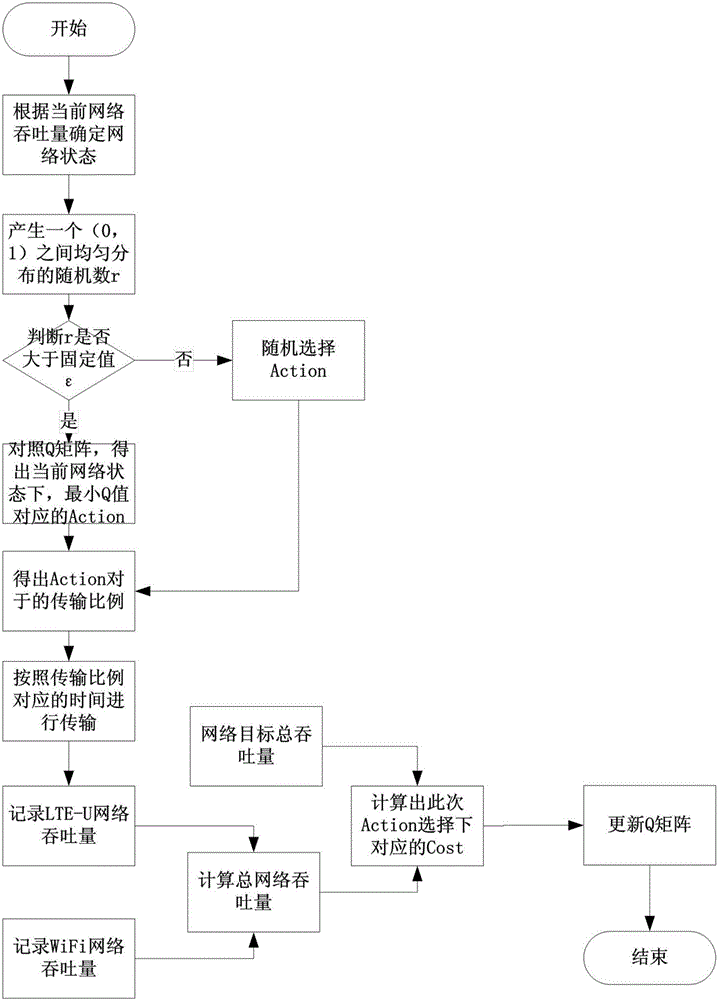Q algorithm-based dynamic duty ratio coexistence method for LTE-U and Wi-Fi systems in unauthorized frequency band
A technology of unlicensed frequency band and dynamic duty cycle, applied in electrical components, wireless communication, network planning, etc., can solve the problems of uncontrollable WiFi access mechanism and unsatisfactory performance
- Summary
- Abstract
- Description
- Claims
- Application Information
AI Technical Summary
Problems solved by technology
Method used
Image
Examples
Embodiment Construction
[0040] The preferred embodiments of the present invention will be described in detail below with reference to the accompanying drawings.
[0041] Aiming at the coexistence problem of LTE-U and WiFi at 5GHz, the present invention proposes a dynamic duty ratio scheme based on Q algorithm on the unlicensed frequency band of LTE-U and WiFi system. Different from the traditional time division multiplexing coexistence scheme, the present invention divides time into several transmission periods T, and LTE uses 2GHz and 5GHz at the same time by means of CA technology. In addition, LTE-U will adopt the LAA transmission method, that is, important control data will be transmitted on 2GHz, and user data will be transmitted on 5GHz. In this way, even if the transmission of LTE-U on 5GHz is interrupted, the important data of LTE-U users will not be lost.
[0042] In the scheme, LTE-U users maintain their transmission on 2GHz on the one hand, and transmit on 5GHz according to the transmissi...
PUM
 Login to View More
Login to View More Abstract
Description
Claims
Application Information
 Login to View More
Login to View More - R&D
- Intellectual Property
- Life Sciences
- Materials
- Tech Scout
- Unparalleled Data Quality
- Higher Quality Content
- 60% Fewer Hallucinations
Browse by: Latest US Patents, China's latest patents, Technical Efficacy Thesaurus, Application Domain, Technology Topic, Popular Technical Reports.
© 2025 PatSnap. All rights reserved.Legal|Privacy policy|Modern Slavery Act Transparency Statement|Sitemap|About US| Contact US: help@patsnap.com



